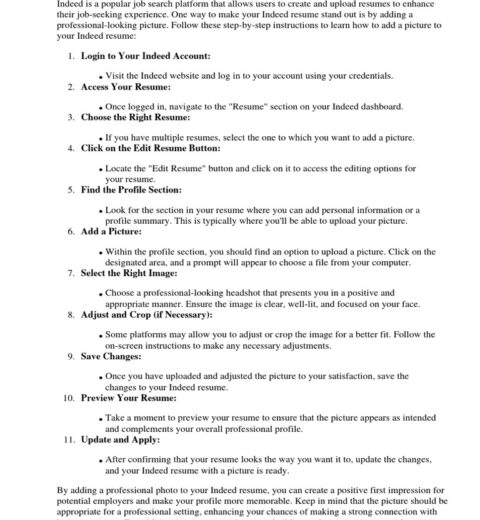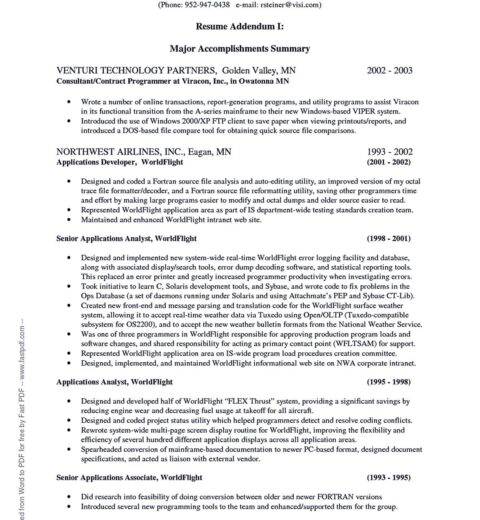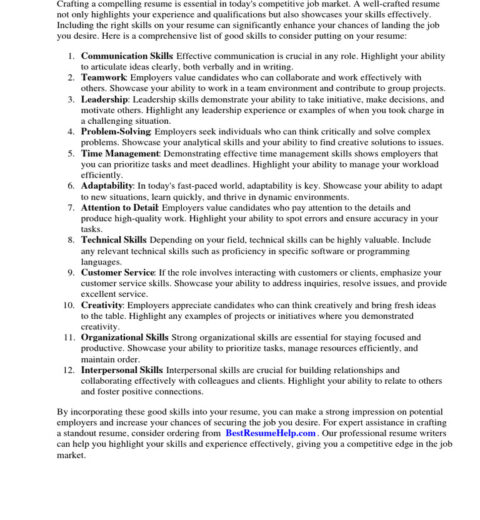When it comes to crafting a resume, one of the most frequently asked questions is, “How long should my resume be?” The length of a resume can significantly influence a job applicant’s chances of standing out in a crowded field. An optimal resume balances conciseness with the provision of sufficient detail to capture the essence of an applicant’s qualifications and experiences. In this article, we will explore crucial factors that affect resume length, provide guidelines for different types of job seekers, and present essential tips to ensure that your resume is effective and engaging.
To begin with, understanding the purpose of a resume is fundamental. A resume serves as a personal marketing document designed to summarize an individual’s career trajectory, skill set, and achievements. The ideal length largely depends on the industry, the level of experience, and the position applied for. In general, the conventional wisdom is that a one-page resume suffices for early-career professionals, while individuals with more extensive experience may need up to two pages. However, this guideline is nuanced and requires exploration.
First, consider the target audience. Different industries and roles have varying expectations when it comes to resume length. For example, creative fields such as advertising or design may favor visually appealing, unconventional resumes that encapsulate projects and portfolios rather than rigid structures. In such cases, a longer format that showcases artistic flair and diverse projects can be justifiable.
Conversely, more traditional fields, such as finance or law, generally uphold the one-page norm. Employers in these sectors typically favor succinctness, expecting candidates to demonstrate their qualifications and achievements within a compact format. Consequently, crafting a tailored resume that adheres to industry standards is critically important.
Next, assess your experience level. For recent graduates or individuals with limited professional experience, a one-page resume is often adequate. It should succinctly highlight relevant coursework, internships, volunteer work, and any academic honors. In this case, the emphasis should be placed on relativity—aligning the content of the resume with the position being sought.
For mid-level professionals, it may be appropriate to extend the resume to two pages, offered that the additional length is justified by relevant experiences and accomplishments. Here, the focus should shift to quantifiable achievements, contributions to past employers, and significant projects. Utilizing bullet points can enhance readability, allowing hiring managers to quickly grasp key information.
For senior professionals, executives, or specialists with extensive experience, a two-page resume can be beneficial. In these cases, it is essential to present detailed narratives of career progression, leadership roles, strategic contributions, and industry-specific competencies. However, clarity and relevance remain paramount. Every item included must bolster the narrative and demonstrate the professional’s value to potential employers.
Another important consideration is the inclusion of unnecessary details. Avoid bloating a resume with superfluous information, such as irrelevant job experiences or generic descriptions. Instead, emphasize the most recent and pertinent roles and skills that align with the job description. Each sentence should be purposeful, and resume sections should reflect achievements rather than mere duties.
Additionally, formatting plays a pivotal role in maintaining reader engagement. A clean, organized layout with adequate white space allows the hiring manager to navigate the resume with ease. Using subheadings, bullet points, and consistent font styles contributes to a professional appearance while ensuring that key information is accessible at a glance.
Furthermore, when creating a resume, it is essential to tailor the content to each application. A generic resume that fails to address specific job requirements often leads to missed opportunities. Instead, modify synonyms and phrases that resonate with the language used in the job posting. This strategic customization not only optimizes for applicant tracking systems but also highlights relevant experience and skills to hiring officials.
Another aspect to bear in mind is the significance of including relevant keywords within your resume. Many organizations utilize applicant tracking systems to filter through applications. Therefore, integrating industry-specific terminology—found in both the job description and company culture—can significantly enhance your resume’s visibility.
In summary, the discourse surrounding resume length is multifaceted. A one-page resume is typically suited for entry-level professionals, while two pages may be appropriate for those with extensive careers. Ultimately, the key is to produce a document that illustrates qualifications, accomplishments, and skills in an engaging, concise manner. Respect industry norms, tailor your content meticulously, and harness effective formatting strategies to optimize clarity and impact.
Remember that the resume serves as your first impression—make it count. Length is one of many elements that contribute to a well-rounded application, but a concise and targeted presentation is paramount in leaving a lasting impression on potential employers.




